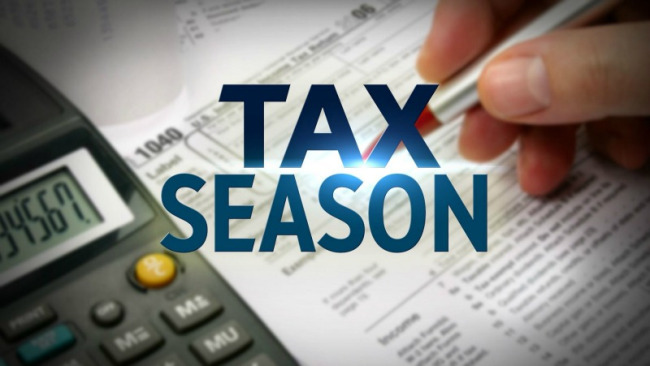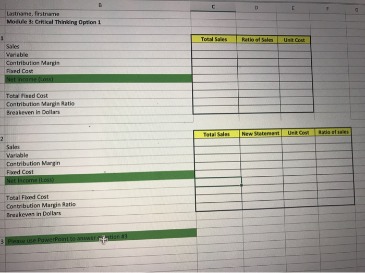
Differentiate between financial accounting and cost accounting. The break-even point—which is the production level where total revenue for a product equals total expense—is calculated as the total fixed costs of a company divided by its contribution margin. The main goal of lean accounting is to improve financial management practices within an organization. Lean accounting is an extension of the philosophy of lean manufacturing and production, which has the stated intention of minimizing waste while optimizing productivity. For example, if an accounting department is able to cut down on wasted time, employees can focus that saved time more productively on value-added tasks. Yes, it is compulsory for businesses to maintain financial accounts.
They disclose profit or loss of each product, unit etc. Disclosure of relative efficiency – Financial accounts fails to create difference in the efficiency and inefficiency of workers, cost centre, plants and machinery etc. Analysis of profit – Financial accounts disclose the Gross Profit or Net Profit for the whole business at the end of the year. Recording – It classifies, records and analyse the transactions in a subjective manner means according to the nature of expenses.
Key Differences Between Cost Accounting and Financial Accounting
Stock Valuation – In cost accounts stock is valued at cost. Recording – It records the transactions and classifies them in an objective manner i.e. according to the purpose for which costs are incurred. Reporting – It involves reporting of business performance at the end of the accounting year. Purpose – It serves the interest of business and other interested parties by providing suitable information in the financial statements. Control – It provides for a detailed system of control with the help of standard costing and budgetary control.

Financial accounting provides precise information regarding the working results and the financial state of affairs of a business to both internal and external users. This information is generally available after the close of the accounting year. The preparation of financial statements is governed by generally accepted accounting principles and practices. Cost accounting provides information about costs to internal users for purpose of cost ascertainment, control, planning and decision-making. The information, though not always very precise, is made available as and when needed.
Definition Of Cost Accounting
(d) Cost accounts records both and estimated costs. Statutory requirement – Maintenance of these accounts is voluntary except in certain industries where it has been made obligatory to keep cost records under the Companies Act. Nature – Financial accounts are maintained on the basis of historical records.
Fall Congressional Outlook – Akin Gump Strauss Hauer & Feld LLP
Fall Congressional Outlook.
Posted: Tue, 05 Sep 2023 13:36:11 GMT [source]
Operating cost is calculated by adding cost of goods sold with all the other costs of running the business. (3) Financial Accounting primarily protects the interests of the outsiders dealing with the business viz., shareholders / debenture holders, creditors / customers, bankers, Government and so on. (2) Due the various statutory requirement prevailing at present, the maintenance of financial records has become more or less compulsory. Valuation – Stock is always valued of cost price of stock. Format of presenting information-Financial accounting has a single uniform format of presenting information, i.e.,Profit and Loss Account, Balance Sheet and Cash Flow Statement.
Marginal Costing
Duration of – FA provides financial information once a year. Analysis – CA shows the profit result of each operation process and product. Along with accounting numbers, how to calculate your restaurant’s inventory turnover rate it also uses non-financial measures. Valuation of stock – Stocks are always valued at cost. Content of reporting – Reporting is always done in aggregate.
Decision making – Financial Accounting provides limited information for decision making. Responsibility fixation – Financial Accounting does not provide a basis for fixing responsibility. Provision for control – There is no provision for controlling. Valuation of stock – Stocks are always valued at then- cost or market values whichever are lesser. Form of accounts – These are maintained according to the guidelines of the Income Tax Act of India and the Companies Act of India. Figures – Cost Accounting also deals with estimated figures.
How Does Cost Accounting Differ From Traditional Accounting Methods?
Types of statements prepared – Cost accounting generates special purpose statements and reports like Report on Loss of Materials, Idle Time Report, Variance Report, etc. Cost accounting identifies the user discusses his problems and needs and provides tailored information. Types of transactions recorded – Cost accounting not only records external transactions but also internal or interdepartmental transactions like issue of materials by store-keeper to production departments. Annual reporting is the rule in financial accounting, whereas there is no time limit in reporting in cost accounting.
- Furthermore, financial accounting also lacks analysis of losses.
- What’s more, you can utilize CPA discounts and CMA codes to help reduce your overall costs.
- In cost accounting, it is possible that there is no reference following.
- The scope of cost accounting extends to cost control, cost reduction and managerial decision making.
- Cost accounting, on the other hand, renders information for the guidance of the management for proper planning, organisational control and decision-making.
However, in the case of certain industries, the Central Government has made it compulsory to maintain cost records. Objective – To calculate the cost of production for the purposes of price fixation and also cost control. Financial accounting is largely concerned with the transaction between the undertaking and the third parties and therefore it has to observe the accounting period convention which is usually a year. The income statement and the balance sheet are therefore prepared and presented before the members usually once at the end of the accounting period. (1) Purpose – The main purpose of cost accounting is accounting for cost for enabling cost control and cost reduction. (4) Time period – Financial statements (the outcome of financial accounting) are prepared in periodic intervals, generally, once in a year.
Inventory valuation- Inventory is valued at cost. Items of costs- Items of costs are analysed, classified, apportioned and allocated in order to calculate the cost per unit. Periodicity of Reporting – Financial accounts are prepared at the end of the year. Control – Under financial system, greater control is kept on cash movement, i.e., receipts and payment of cash.
A cautionary tale: How Italy’s ChatGPT ban hurt businesses … – Washington University in St. Louis
A cautionary tale: How Italy’s ChatGPT ban hurt businesses ….
Posted: Tue, 05 Sep 2023 14:00:00 GMT [source]
It is also called post-mortem of past information. (5) Nature of data – Cost accounts are prepared using past as well as future information. Inventory valuation – Inventory is valued at cost or market price whichever is less.
Difference between cost accounting and financial accounting
Cost accountants must be highly organized, as they have to keep track of many different materials. Moreover, cost accountants must be flexible because they might be asked to analyze data from different business aspects. Although the regulatory framework for financial reporting is very governed, cost accountants prepare internal documents that don’t have to follow regulatory guidelines. Cost accounting is one component of management accounting’s broader concepts, including budgeting, finance and analyzing returns on investments. Let’s start with a look at the basic job functions of cost accounting vs financial accounting. The biggest differences are in the areas of compliance, accounting standards and target audiences.
